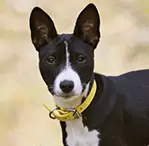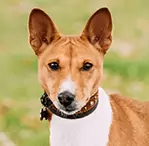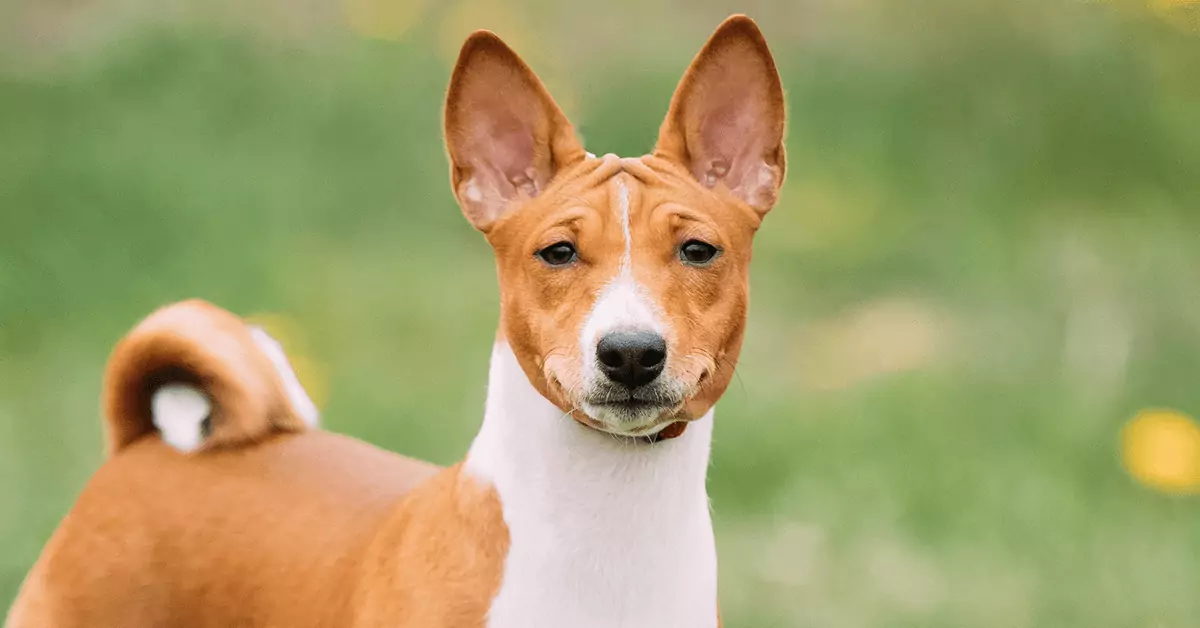
Meet the Basenji
High Doggy IQ
Apartment Friendly
Pawfect Playmate
My Many Looks
My Breed Characteristics
Furbulous Fact
As I Grow Up
History of My Breed
Care Tips
Training Tips
Personality
Energetic
Playful
Intelligent
Group
Hound
Origin
Democratic Republic of the Congo
Life Span
13-14 Years
Breed Popularity
#86 of 195
Height Range
16-17 Inches
Weight Range
22-24 Pounds
Coat Details
Type
Short
Texture
Features
Colors
Bicolor: Black & White; Brindle & White; Red & White; Cream & White;
Hypoallergenic
Yes
Cost to Buy
$1,250-$2,000
Lifetime Care Cost
$17,435
My Many Looks
My Breed Characteristics
Furbulous Fact
As I Grow Up
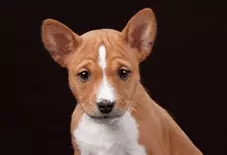
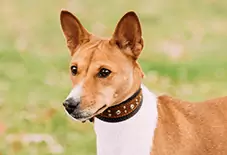

History of My Breed
Care Tips
from Dr. Jessica Greenberg, Associate VeterinarianKeep an eye on your Basenji’s eyes.
Basenjis are predisposed to some genetic eye issues, including glaucoma, progressive retinal atrophy (PRA), coloboma eye, and persistent pupillary membranes. Always tell your vet right away if you notice any changes in the size, shape, or color of your dog’s eye so you can address the issue right away. Some breeders might be able to tell you if their dogs have been screened for these, so consider discussing this beforehand or ask your vet about DNA tests.
Be watchful for signs of patellar luxation.
Patellar luxation is present in many dog breeds, including Basenjis. Basenji puppies are sometimes born with this condition, and other times it develops later on. Patellar luxation occurs when the kneecap is dislocated from the knee joint, causing mild to severe pain. It’s often harmless, but discuss the issue with your vet to decide if treatment is necessary.
Watch your Basenji’s weight.
Like many small, naturally trim breeds, Basenjis are prone to obesity. Make sure you’re feeding your Basenji high-quality dog food, and avoid giving them excess treats, especially human food. Also, give your dog regular exercise to help prevent obesity.
Training Tips
from Dr. Jessica Greenberg, Associate VeterinarianLet your dog get a ton of exercise.
This is a high energy breed that needs a lot of exercise. They should be taken on several walks a day with around two to three hours of extensive exercise a day. A fenced yard is necessary for these dogs to play in, as they need to be able to run around, but their prey instincts are too strong to be let off the leash just anywhere. If they stay sedentary, they’ll be unhappy and can start to misbehave. Do whatever you can to give them plenty of exercise to tucker them out.
Interrupt your Basenji when it’s in “predatory mode.”
Basenjis have a strong instinct to hunt and have a hard time keeping themselves from chasing after something they see as prey. Watch for the “predatory look” when you’re out with your dog, which is when a dog pauses, focuses on an animal, and hunches over. Interrupt your dog when it’s doing that and remove it from the situation.
Prioritize leash training.
Leash training is important for Basenjis because of their innate desire to chase things. Teach your puppy how to heel, which is a form of walking where the dog isn’t pulling you at all and are instead walking right beside you at the same pace. They’ll want to run ahead, and you’ll want to control that. It’s also important to teach them how to behave off the leash because that’s when they’re the most comfortable.
My Many Looks
My Breed Characteristics
Furbulous Fact
As I Grow Up
History of My Breed
Care Tips
Training Tips
-
Personality
Energetic
Playful
Intelligent
-
Group
Hound
-
Origin
Democratic Republic of the Congo
-
Life Span
13-14 Years
-
Breed Popularity
#86 of 195
-
Height Range
16-17 Inches
-
Weight Range
22-24 Pounds
-
动物皮毛
Type
Short
Texture
Features
Colors
Bicolor: Black & White; Brindle & White; Red & White; Cream & White;
-
Hypoallergenic
Yes
-
Cost to Buy
$1,250-$2,000
-
Lifetime Care Cost
$17,435
